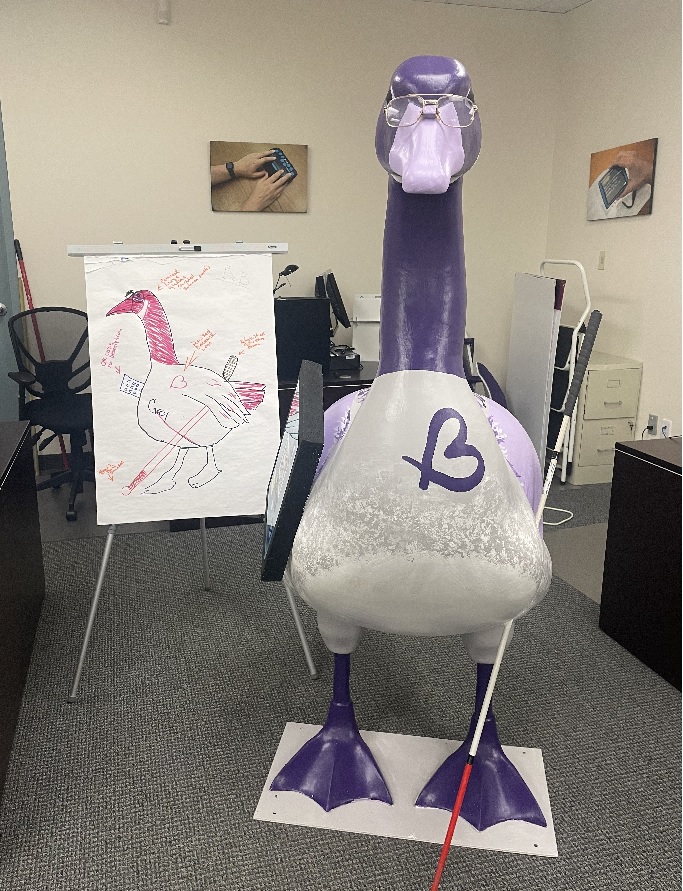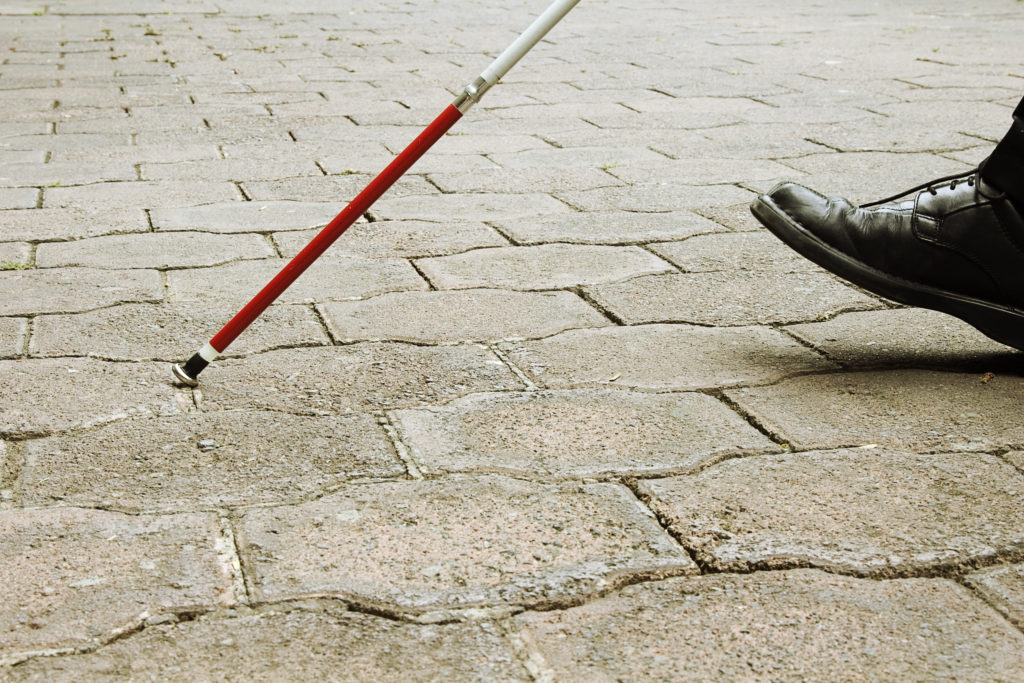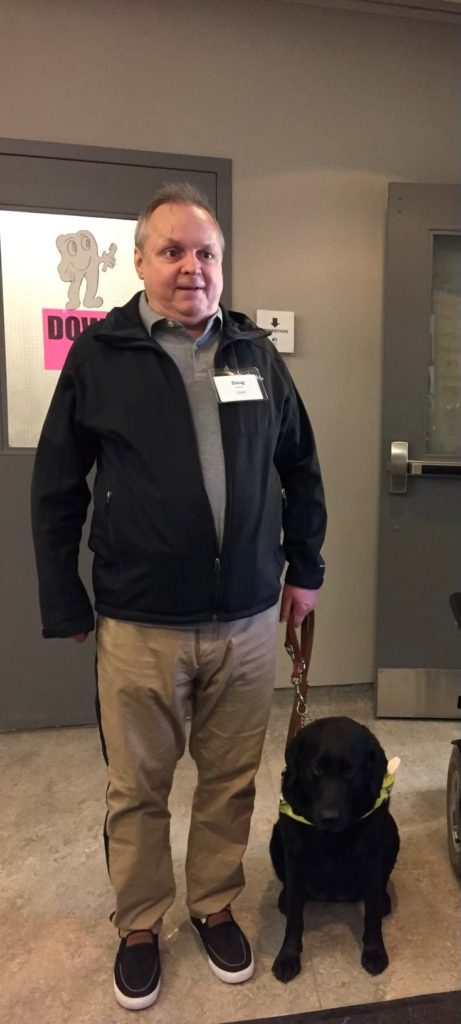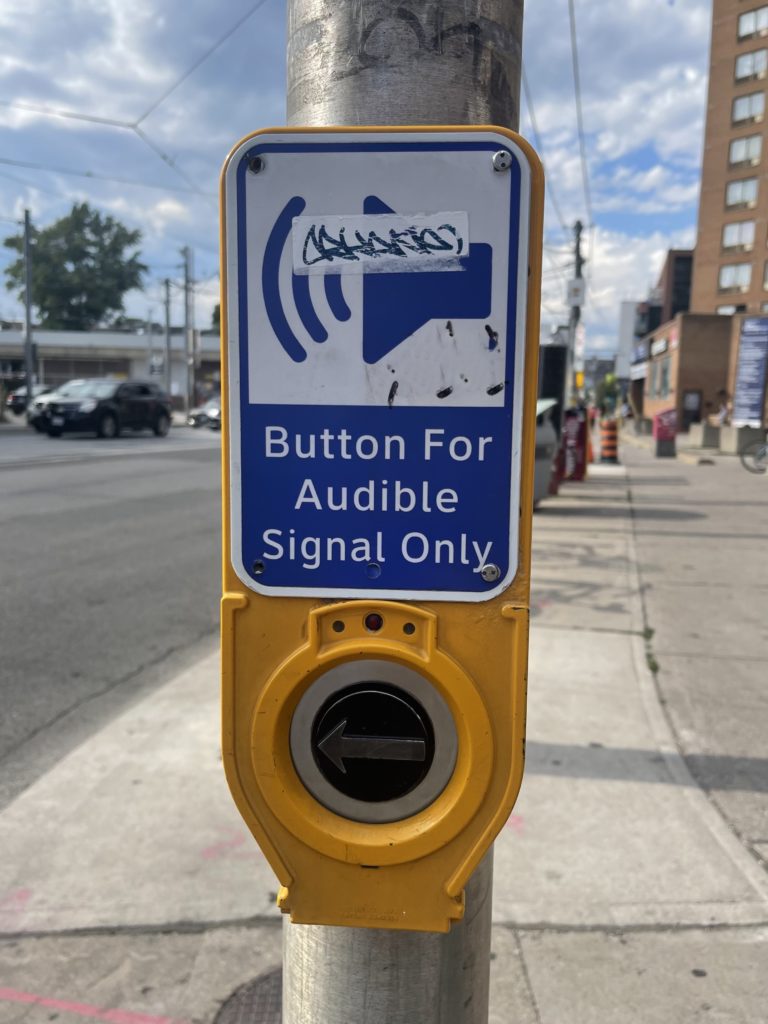CNE Goose on the Loose 2023

BoB (short for Because of BALANCE) is one of BALANCE for Blind Adults’ long-time clients! BoB loves getting out into the community, and uses his white cane to navigate with confidence, thanks to training with our Orientation and Mobility Specialists. It hasn’t always been easy, but BoB is one smart and determined goose, and knows when to reach out to BALANCE for support. While BoB can often be found getting around town with the flock, they also love having fun with their community online by using screen reading technology that they learned with the help of BALANCE’s Assistive Technology team. BoB’s always been a bit shy, but their independence has really given them wings! BoB loves meeting new people and hopes one day to start a travel Vlog for all their fellow Canadian Geese.
If you know someone like BoB who is living with sight loss and wanting to build more independence or get out into the community, have them contact BALANCE for Blind Adults. Just tell them BoB sent you.
Some “Fun Facts” on How Blind Persons Access the Physical and Virtual World
White canes

For thousands of years, individuals with sight loss used canes to navigate safely in their environments. The addition of the white colour on the long cane became popularized around the 1930’s to increase the visibility of blind and low vision cane travellers as motor vehicles became more prevalent. The white cane is held firmly in the dominant hand of the user, and “swept” from side to side in front of the person, in order to be most effective in object detection.
Note: Please do not try to “jump over” a person’s white cane, and please make way for a person who is using a white cane. Blind persons thank you for your respect and understanding as they pass you by on the sidewalk or at the CNE.
Guide dogs
Humans have always had a special relationship with dogs. Over the past 100+ years, there has been literature referencing dogs providing assistance to blind persons. However, for modern guide dogs, the first training school was established in Germany during World War 1 to assist with blinded veterans. German Shepherds were the first breed to be trained in this program. Today many guide dogs are Labrador Retrievers because their temperament is well-suited to the occupation and they are wonderful companions. Another increasingly common breed is the Standard Poodle, due to the fact that this is a hypo-allergenic breed. Only a small percentage of blind persons in Canada have the ability or interest in owning a guide dog. There are approximately 50,000 blind Canadians, and about 800 are guide dog users.

Accessibility and Navigation
Seiichi Miyake first developed tactile warning surface indicators in 1965. These tactile pavings alert individuals with vision loss of approaching danger and were first used at a school for the blind in Okayama City in 1967 and have since been used all over the world. They come in many variations and can be encountered at street intersections, staircases and subway platforms. Learn more about Toronto’s sidewalk installations at street corners.

Accessible Pedestrian Signals provide audible and tactile feedback to indicate to pedestrians that they have the right of way at signalized intersections. In Toronto, a cuckoo sound indicates a crossing in the north/south direction and a chirp sound indicates a crossing in the east/west direction.
Contributor: Bill Phung, Certified Orientation and Mobility Specialist
Electronic Reading Aids
Some History:
In 1913 Dr E. E. Fournier invented the optophone a device that translated a printed page into sound. Reflected light from the machine’s selenium cells produced musical tones corresponding to the typed letters on a page. A blind person could read the print by interpreting the emitted audio tones. Later models of the optophone allowed for reading of up to 60 words per minute although few were able to achieve this speed.
In 1970 Partners John Linvill and Jim Bliss of Telesensory Inc. began manufacturing the Optacon. This revolutionary reading device involved the use of an array of vibrating pins, providing the user with a tactile image of print material. One placed their index finger on to the vibrating array, while their other hand moved a camera along a line of text thus creating tactile characters and words. The device is still used today by some.
In 1976 Ray Kurzweil invented the first actual reading machine for the blind featuring both Optical Character Recognition (OCR) and text-to-speech output providing blind and visually impaired people a more practical means of reading printed materials.
In 1986 Jim Thatcher created the first screen reader for use with computers at IBM, called IBM Screen Reader. This device involved the use of a separate keypad use to navigate and read text on a computer screen with audio feedback provided by a separate external speech synthesizer.
What is a Screen Reader?
The term “screen reader” refers to a software application that enables people who are blind to use a computer. It works with the computer Operating System and provides access to information regarding icons, menus, dialogue boxes, files and folders, and operating system. A high end screen reader works in the background providing the user seamless interaction with most commonly used applications. Blind Users are provided with information in 2 ways; speech via a hardware or software based speech synthesizer and/or Braille via a refreshable Braille display.
Some commonly used screen readers today include:
- JAWS (job access with speech)
- NVDA (non-visual display access)
- For Windows turn on Narrator
- For all things Apple, turn on VoiceOver
Contributor: Doug Poirier, Assistive Technology Lead